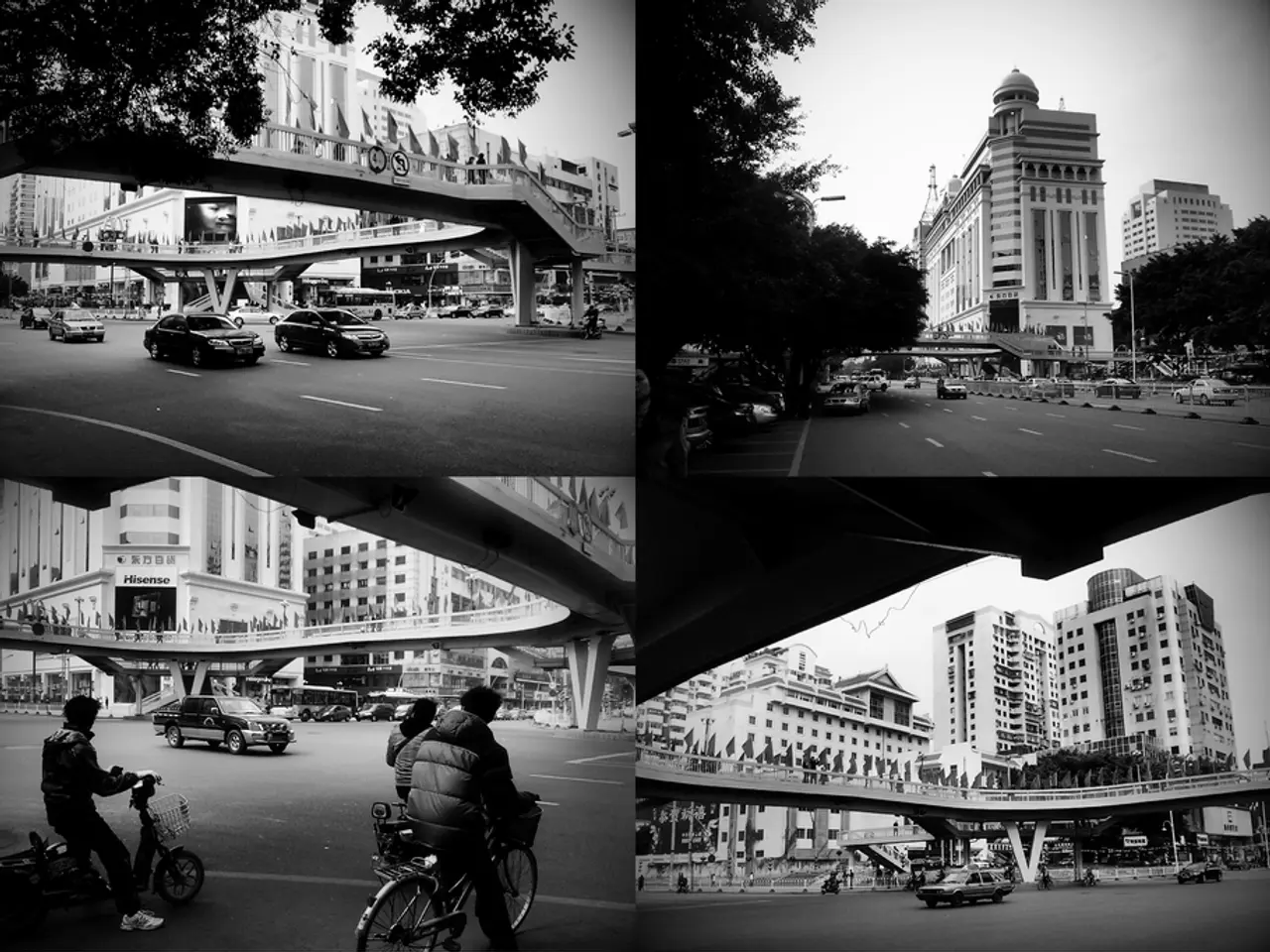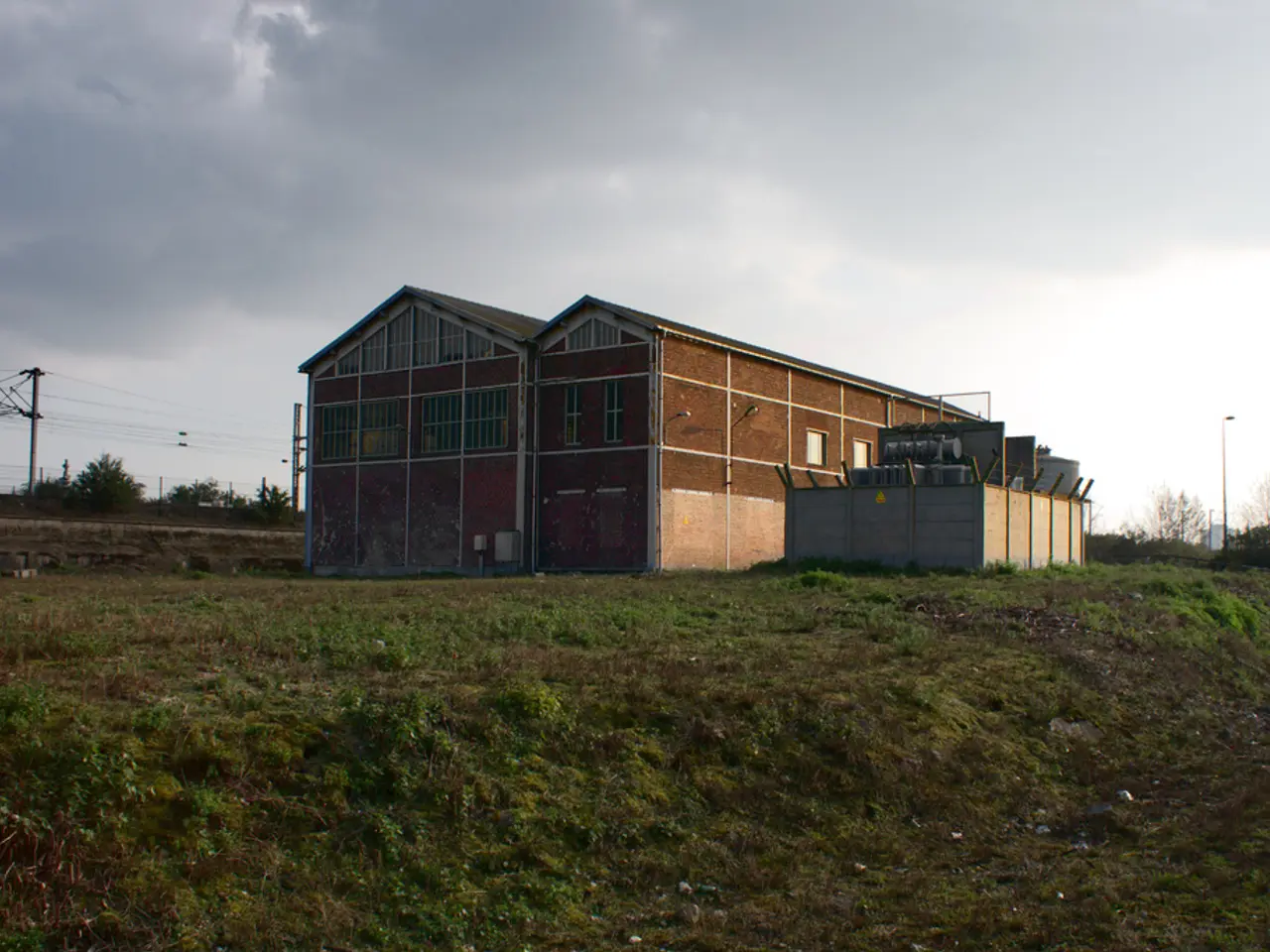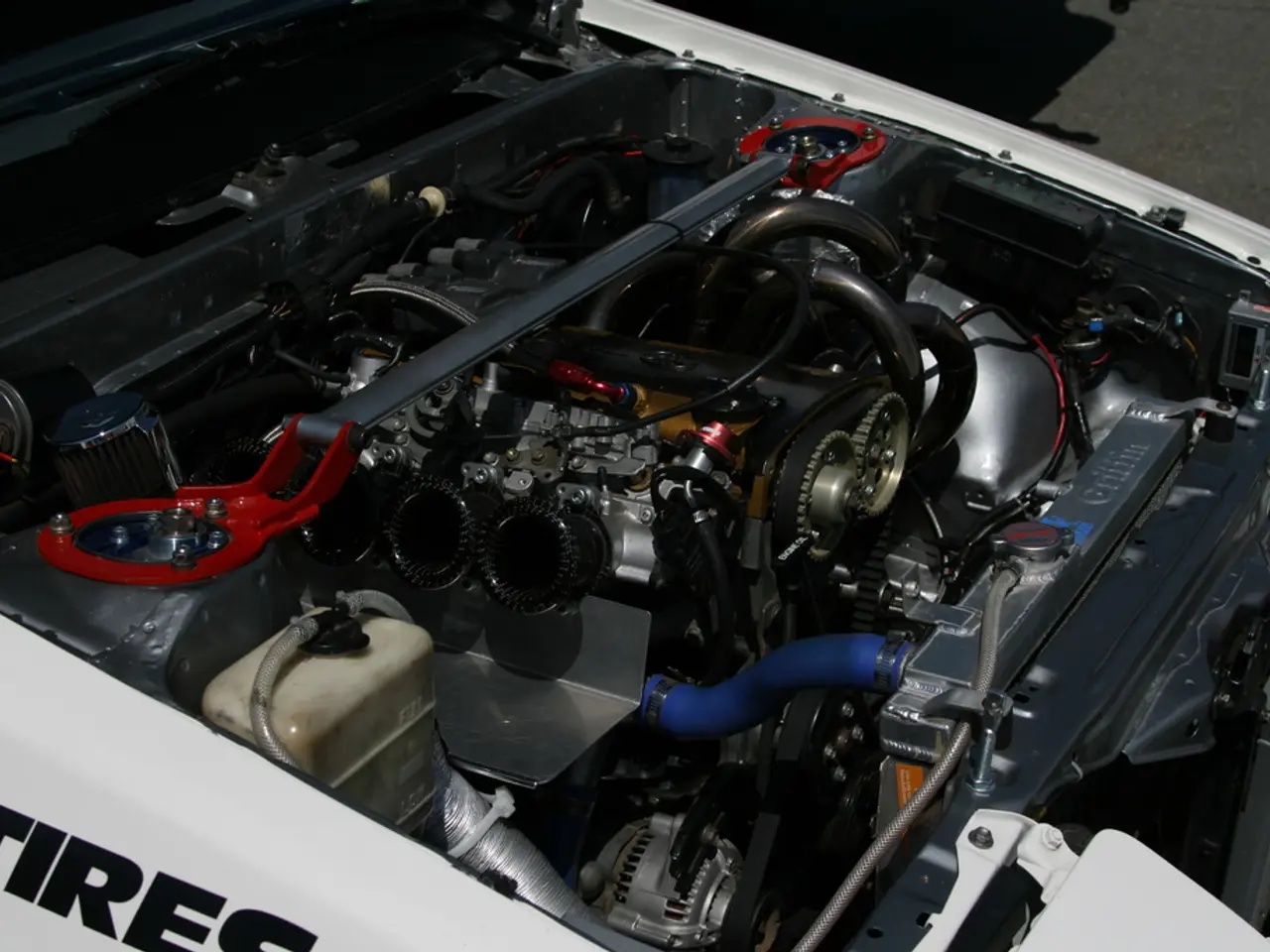Construction of a foot-traffic and bicycle bridge connecting Goldgrube and Rauental
Headline: Koblenz's Pedestrian and Cycling Bridge Set to Boost Sustainable Mobility and Climate Protection
The construction of a new pedestrian and cycling bridge in Koblenz, Germany, is set to revolutionize daily commuting habits and contribute significantly to the city's climate protection efforts. The bridge, connecting the districts of Rauental and Goldgrube, will serve as a crucial link between the future railway station, "Koblenz-Administration Center," and the surrounding amenities, including clinics, the administration center, and the Moselle baths.
Reduction in Car Usage
The bridge is anticipated to encourage a shift towards more sustainable transport modes, with estimates suggesting that it could decrease daily car trips by several hundred. This reduction in car usage will help ease local traffic congestion and promote a healthier, more environmentally-friendly city.
Climate Protection Benefits
By promoting walking, cycling, and public transport, the bridge will contribute to a reduction in local greenhouse gas emissions associated with road traffic. Fewer car journeys mean decreased emissions of CO2 and other pollutants, supporting Koblenz's commitment to climate protection.
Additional Positive Effects
The bridge's construction is expected to bring about a host of additional benefits, including improved air quality due to less vehicular pollution, enhanced quality of life and public health through increased physical activity, and potential long-term behavioral changes encouraging permanent shifts toward sustainable transport modes.
The Future Railway Station
The new railway station, "Koblenz-Administration Center," is being planned alongside the bridge, further enhancing the city's transportation infrastructure. The bridge will serve as a crossing between the future platforms 1 and 2 and also function as a district connection for cycling and pedestrian traffic.
Support and Funding
The bridge construction is part of the state government's focus on promoting cycling and pedestrian traffic, especially in the area of "future-proof inner cities." It is supported by the federal government as part of the "Climate Protection through Cycling" funding program.
Looking Ahead
The Mayor of the City of Koblenz, David Langner, expressed his excitement about the new bridge, stating that it creates new opportunities for accessing the clinics, the administration center, and the Moselle baths. State Secretary of Transport Andy Becht emphasized that the bridge is setting an important signal for a balanced mix of traffic in Koblenz. Minister of Transport Katrin Eder stated that the bridge construction creates the prerequisite for the later construction of a train station.
For more information about the project, including the pedestrian and cycling bridge and the future railway station, visit www.koblenz-baut.de/raugold. The new infrastructure is expected to handle significant passenger traffic upon completion, marking a significant step forward in Koblenz's commitment to sustainable mobility and climate protection.
- The new pedestrian and cycling bridge in Koblenz, linking the districts of Rauental and Goldgrube, will also serve as a crossing between the future railway station, "Koblenz-Administration Center," and the bridge's construction is supported by the federal government as part of the "Climate Protection through Cycling" funding program.
- By reducing car trips and promoting sustainable transport modes, such as walking, cycling, and public transit, the bridge is expected to contribute to environmental-science benefits, including improved air quality, enhanced public health, and decreased greenhouse gas emissions in the industrial sector.
- The completion of this infrastructure project, including the new railway station and the pedestrian and cycling bridge, will not only revolutionize daily commuting habits but also align with ongoing efforts in the science of climate-change mitigation, supporting the city's ambitious climate-change goals.
- The construction of the new bridge and the associated railway station, both expected to handle significant passenger traffic, will provide other long-term benefits, such as strengthening the regional transportation network and offering more job opportunities in the finance sector, through the increased economic activity generated by the project.




